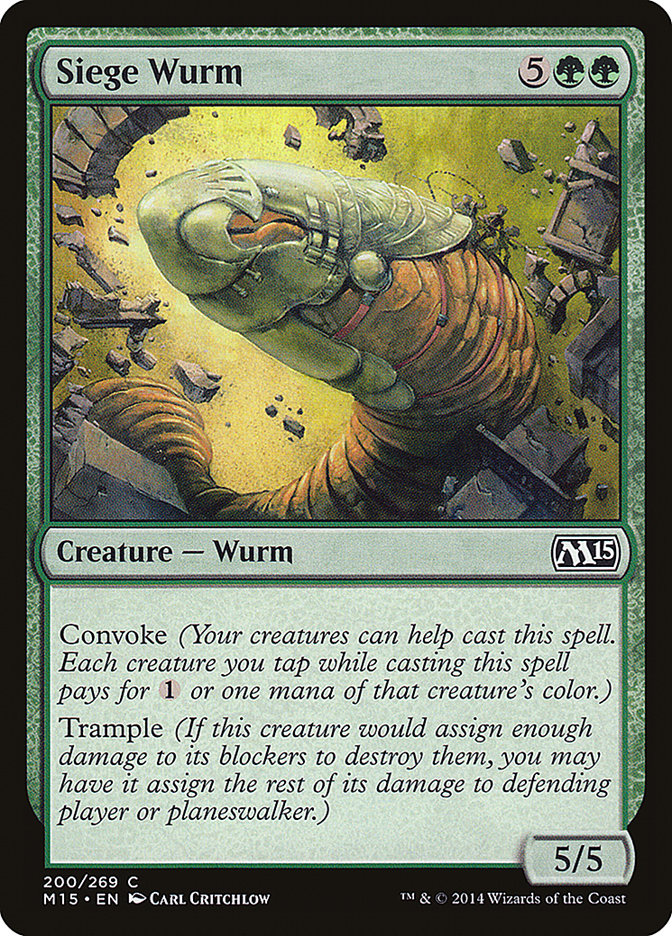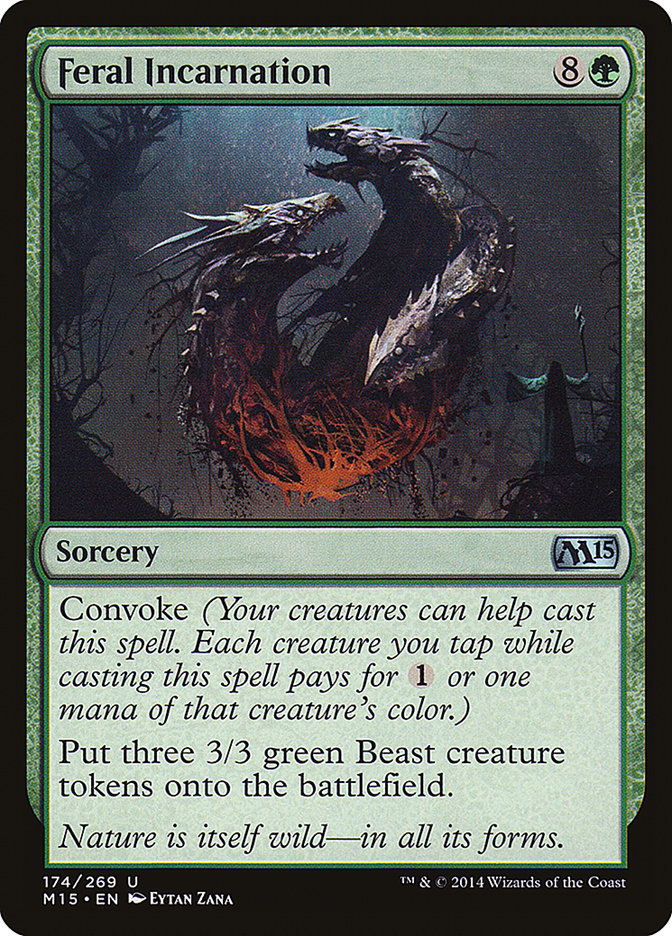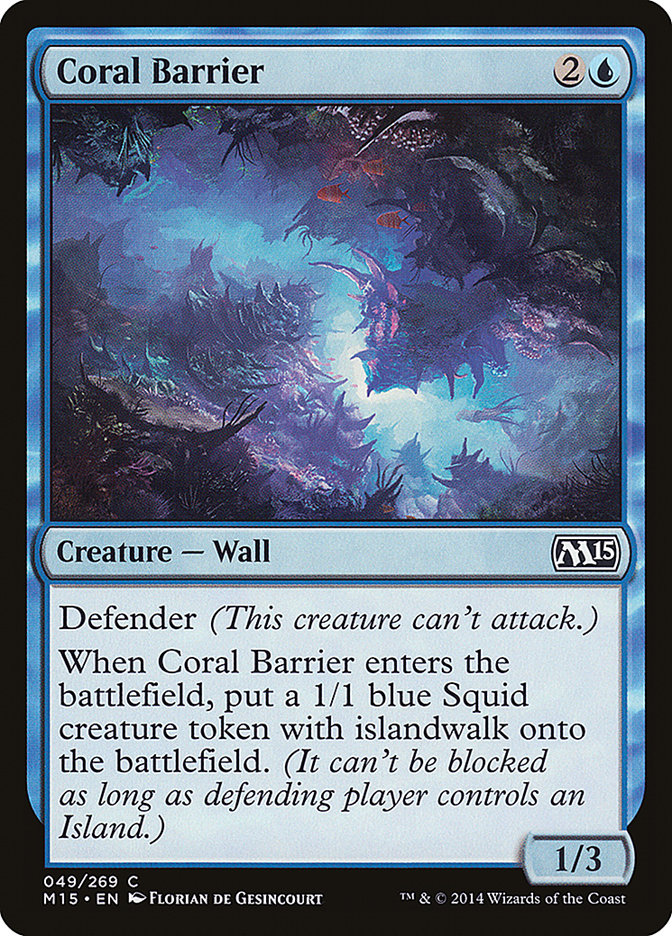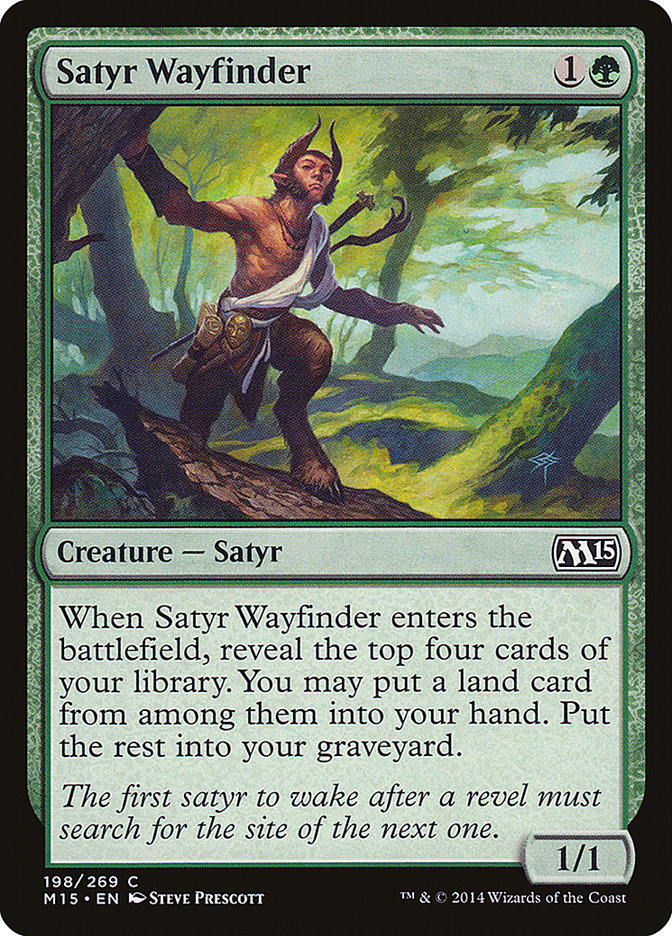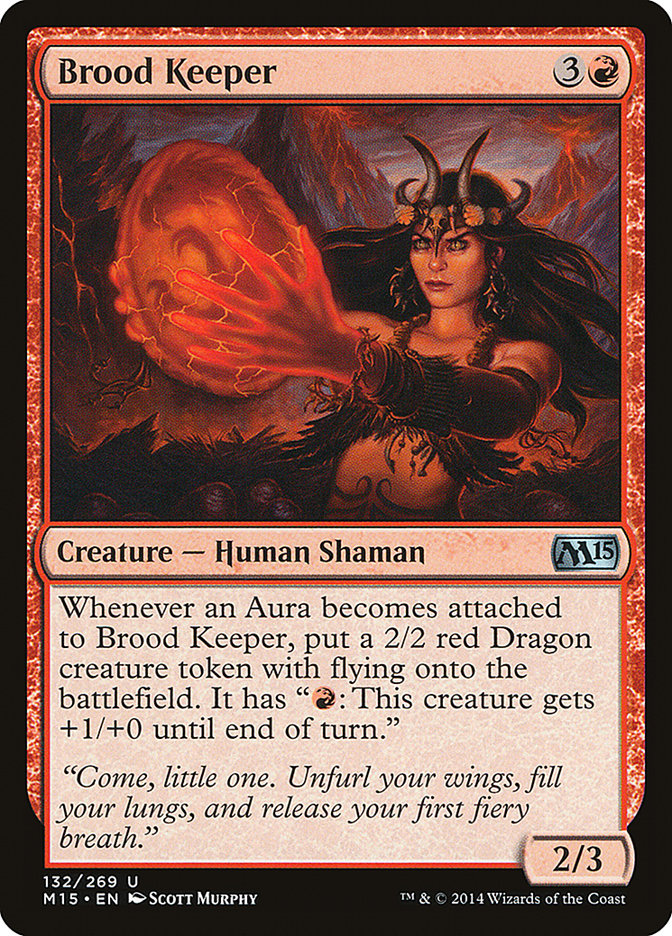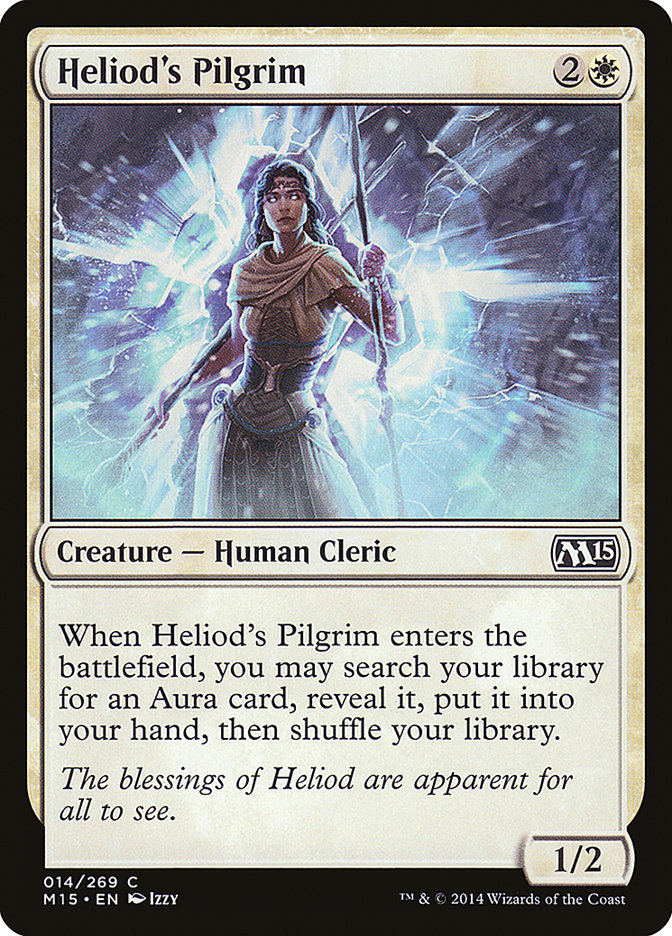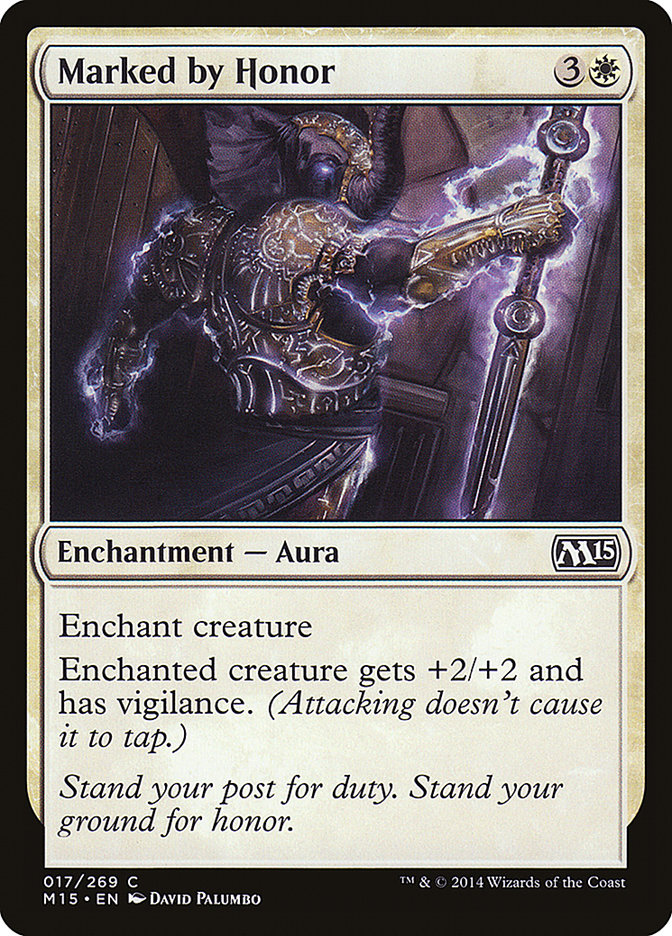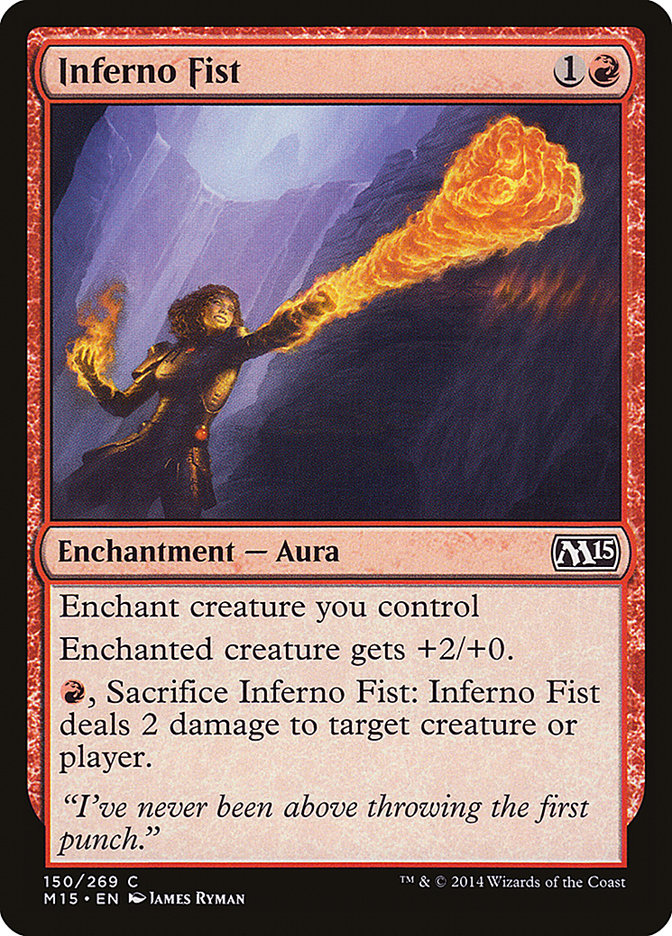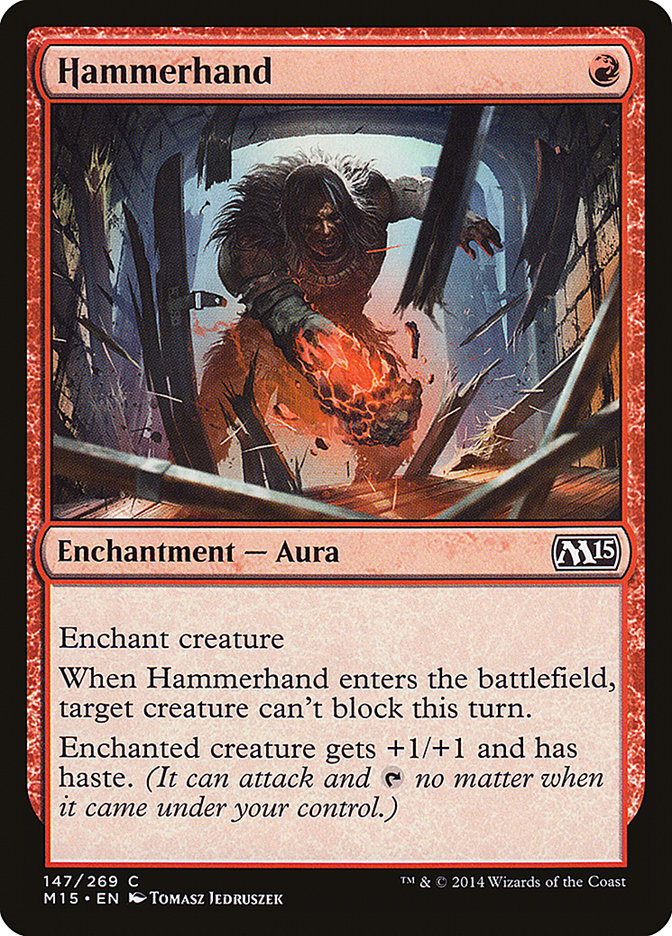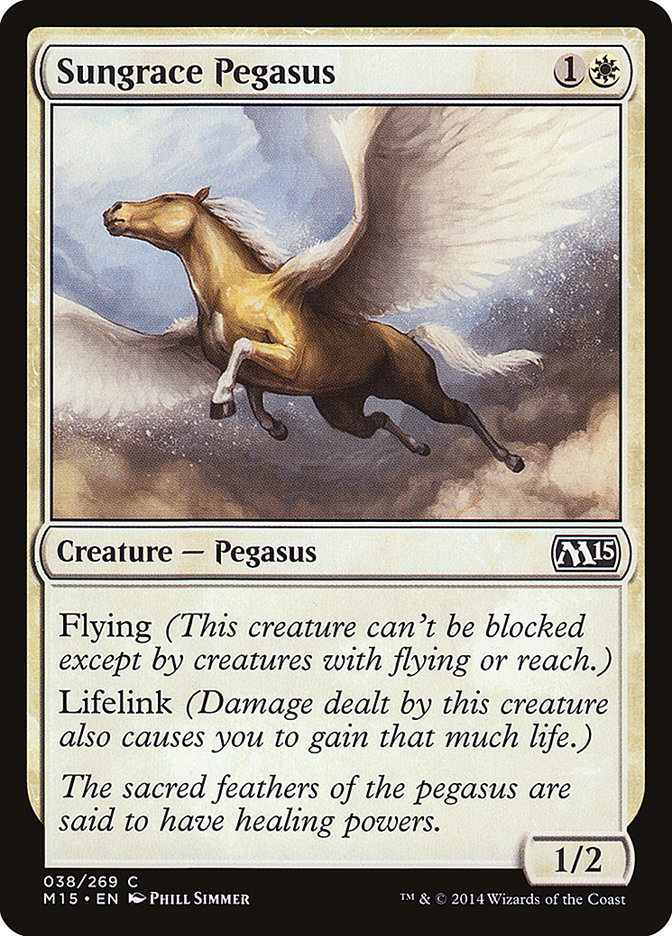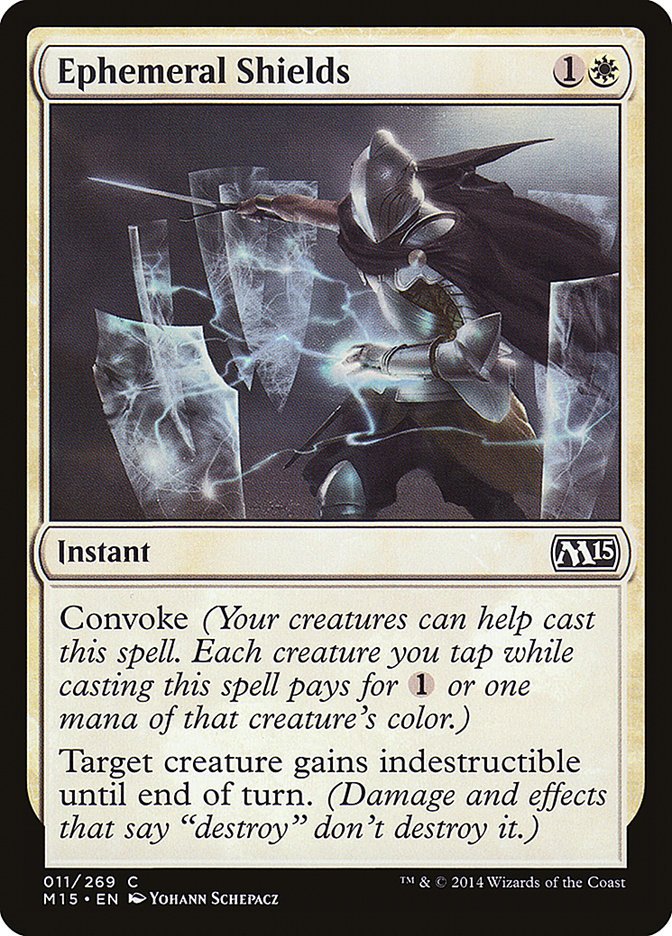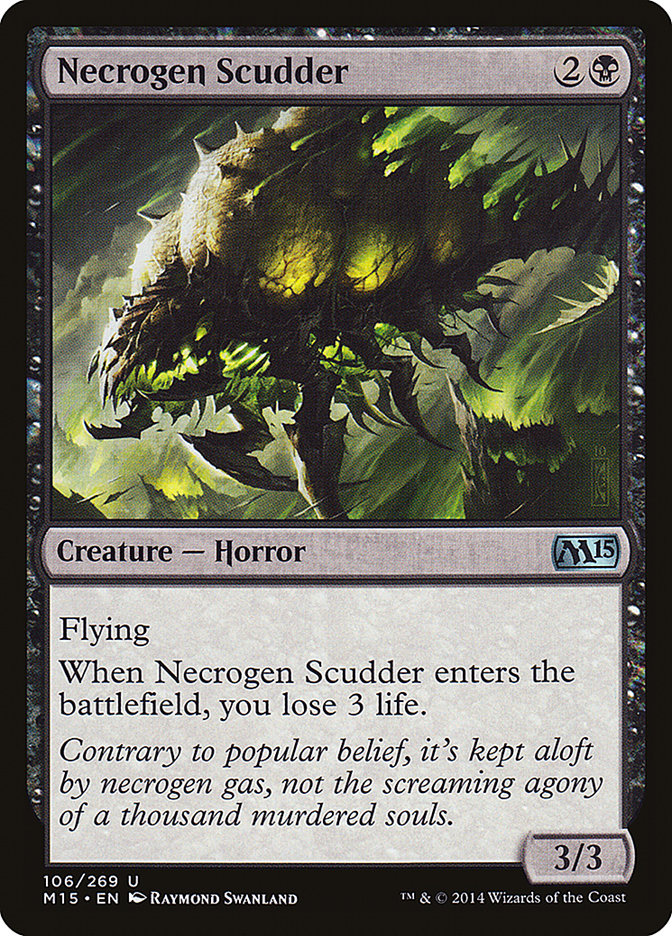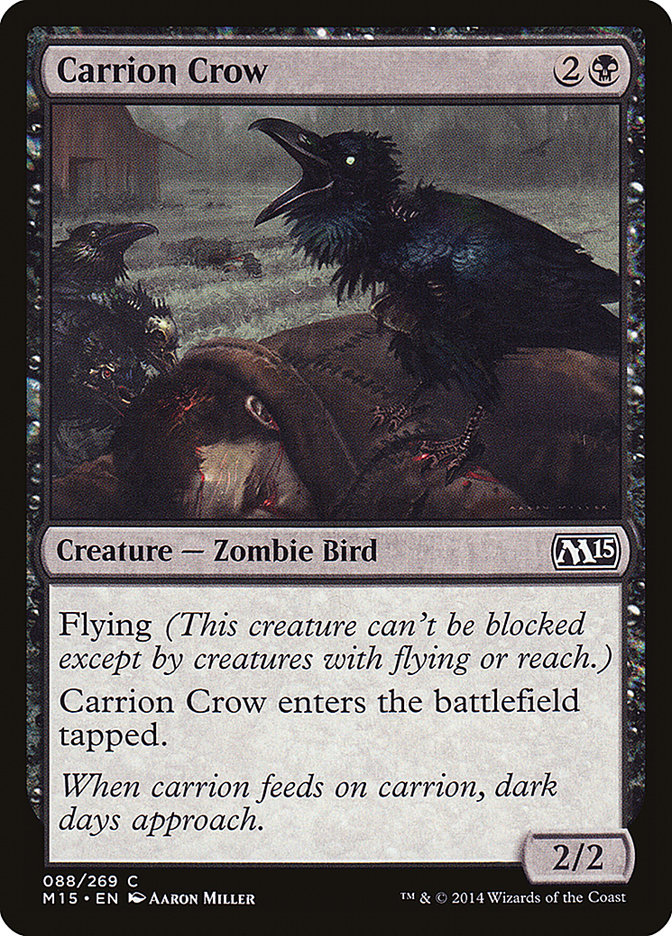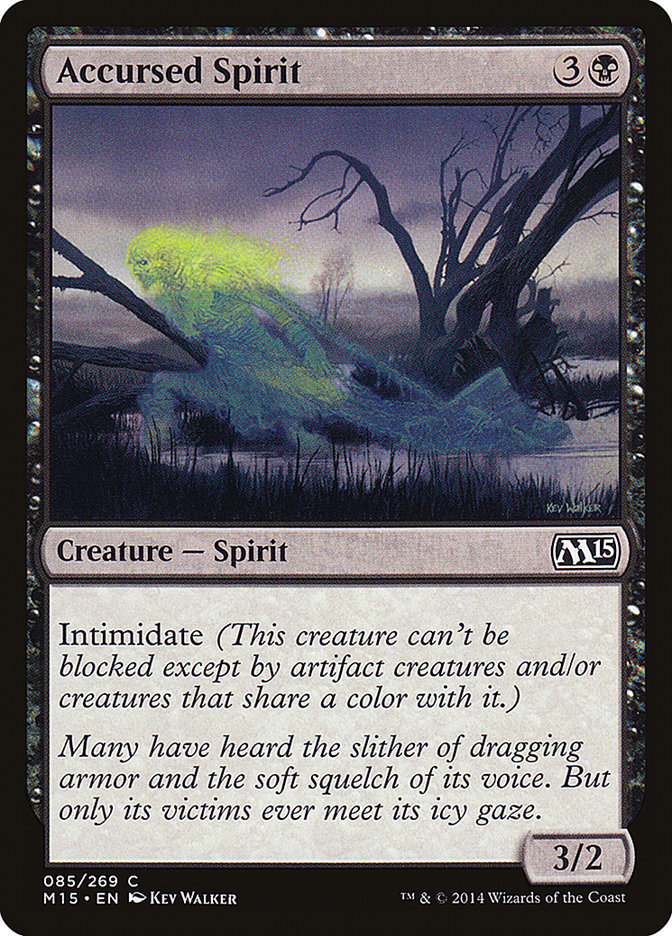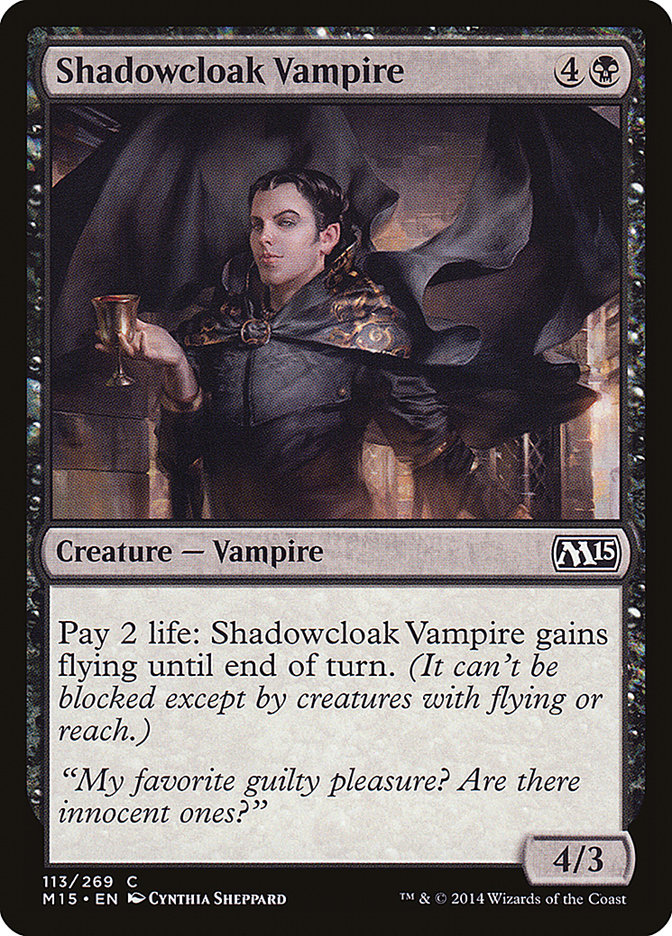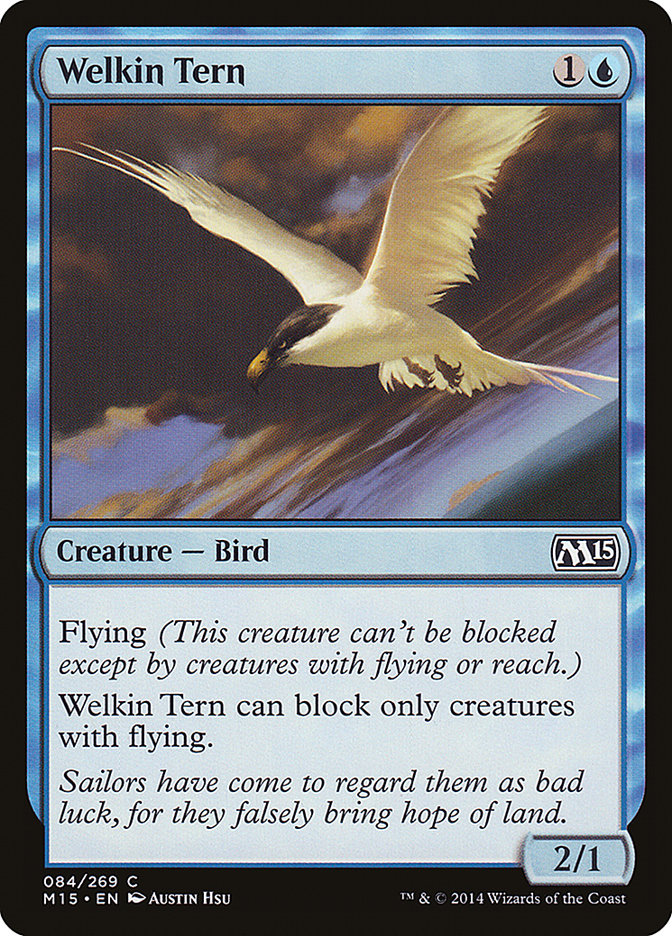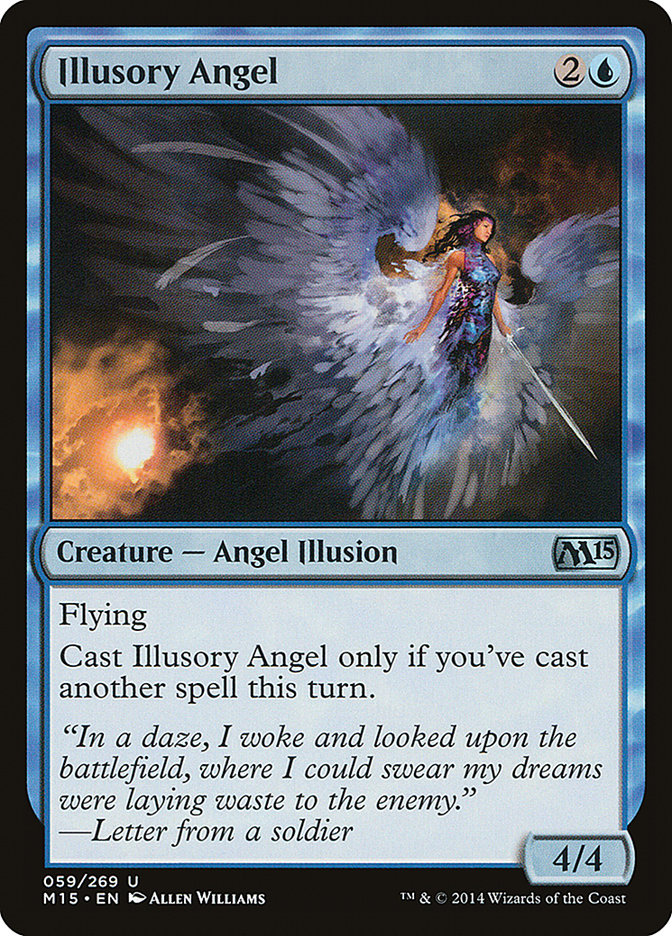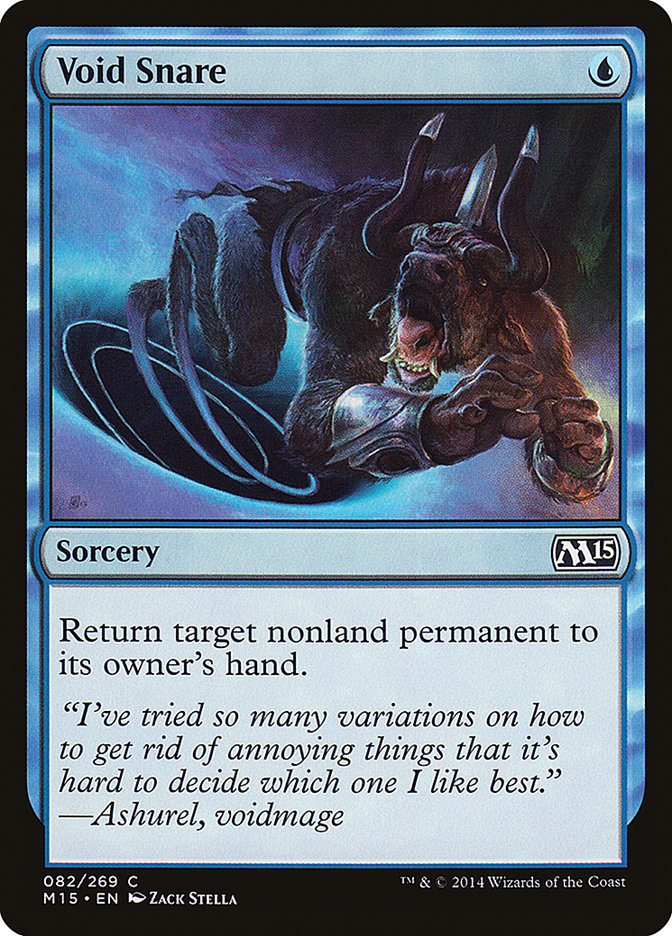With Pro Tour Magic 2015 right around the corner, the pressure is on to learn how to draft Magic’s newest Core Set…and fast! Although the set hasn’t been
in print for long, I’ve managed to get a handful of drafts under my belt and can confidently make a few assertions about the format.
For starters, Red is the strongest color. Not only does it have great removal, but it has powerful uncommons and a respectable stable of creatures.
Black comes up a bit short. On top of all the Black removal spells costing roughly infinite mana, none of the commons really stand out (sorry Necrobite).
That being said, it is draftable, just not by many drafters at the same table.
The format is largely defined by attacking. Almost all of the creatures in the set don’t have great defensive stats so blocking isn’t that appealing to
begin with. To top it off, there are a lot of cards with haste, evasion, and offensive abilities.
Interaction is scarce. More importantly, cards that catch you up from behind are almost non-existent. Because of this, most successful decks take a
proactive approach to the game. Add in the lack of Essence Scatter and poor blockers and building a pure control deck becomes very difficult.
Having a format defined strictly by being proactive might seem narrow, but that isn’t the case with M15. There are a lot of different approaches you can
take from all five colors. I’d like to take today to look at a few I’ve discovered so far.
U/G Convoke
My favorite archetype to draft has definitely been U/G convoke. Although Blue doesn’t actually have any convoke cards of its own, the color does a great
job of complimenting what the Green cards are trying to do.
Most importantly, these are the two convoke cards you need to pick up to fuel this archetype. Living Totem is nice, but it isn’t going to win the game for
you like either of its huge Green brethren. Since there are only two big convoke options to go for (Overwhelm is very bad*), it is almost always correct to
pick them over cards that enable convoke. If you do things right, you should be able to cast Feral Incarnation as early as turn 5! But how are we doing it?
Coral Barrier and Satyr Wayfinder are going to be the lynchpins of any good U/G Convoke deck. Coral Barrier serves as a blue Raise the Alarm, letting you
lower the cost of your big spells by two with a single card. Unlike Raise the Alarm which tends to get taken early, not every blue deck is going to want
Coral Barrier. It is very possible to table the 1/3 after picking a more important card over it early in the pack.
Satyr Wayfinder’s utility is twofold. Not only does it provide a cheap body to help out with convoke, but it also helps ensure you hit your land drops to
play the convoke spells on time or actually hardcast them if the going gets rough.
Research Assistant has been one of the cards to impress me the most out of M15. Not only does it give you a decent defensive creature and a cheap
body for convoke, but the loot ability is very powerful going later in the game. In a deck like U/G Convoke, you’re going to have a linear mix of cheap
enablers and expensive spells. Research Assistant makes sure you don’t run out of gas in the midgame and can keep burying your opponent under 3/3’s and
Siege Wurms.
For reference, this is a solid version of the deck I drafted in one of my team’s Pro Tour practice drafts:
Creatures (15)
- 1 Siege Wurm
- 1 Runeclaw Bear
- 1 Elvish Mystic
- 2 Satyr Wayfinder
- 1 Chasm Skulker
- 1 Carnivorous Moss-Beast
- 2 Coral Barrier
- 1 Living Totem
- 2 Nimbus of the Isles
- 1 Research Assistant
- 1 Shaman of Spring
- 1 Venom Sliver
Lands (17)
Spells (8)
Sideboard

I ended up going 2-1 with this deck, only losing to Chris Fennell’s Mono-Black deck. To be fair, he had an alarming five copies of Paragon of Open Graves
backed by a small army of Black Cats. Can any deck beat that? I certainly meowt it.
The big question to ask is if U/G Convoke is better or worse than G/W Convoke. Overall, I’d have to say better. White has the upside of being a little more
explosive, as well as having additional convoke cards in Triplicate Spirits and Seraph of the Masses. What it doesn’t have is the utility Blue does. Often
you power out your big convoke card and get a bunch of damage in, but your opponent manages to catch up and deal with it. At that point, Blue has cards
like Divination and Research Assistant to keep the gas coming. Not to mention Blue has more individually powerful fliers which can help close out the game
on their own.
Most importantly Blue just has better interaction cards like Void Snare, Peel from Reality, and Encrust. While G/W Convoke is a good archetype in its own
right, I know I’m keeping my eyes open for blue cards after first picking a Green convoker.
R/W Auras
Next on the list is R/W Auras, and let me tell you this one is a doozy. First and foremost, I have to pat myself on the back for having the read on this card:
Brood Keeper is absolutely out of control. When I said to first pick it highly and build around it, I was actually selling it short. What I should’ve said
was “first pick it over most of the rares in this set because it is nearly unbeatable”. If you manage to put even one aura on Brood Keeper, the advantage
you get is already daunting. Anything past that and it feels like it’s downright impossible to lose.
One card that wasn’t quite on my radar was Heliod’s Pilgrim. As it turns out, it is the card that really makes this archetype tick. In retrospect, it
should have been fairly obvious. Free cards are always valuable, especially when they synergize so well with the extra card they grant you. With Heliod’s
Pilgrim there’s no need to worry about having a body to put an aura onto. Not to mention, if they end up killing Heliod’s Pilgrim you’re not getting
two-for-one like you normally would. The real key to the pilgrim’s success, however, lies in its versatility.
First off, I can’t say enough good things about Inferno Fist. For such a simple enchantment the card does a lot of work. For starters, boosting a
creature’s power by two for two mana is a solid rate. Even if things go horribly awry, you still have the bailout plan of just sacrificing it to deal two
damage to your opponent, which has to be good in a deck that wants to play Inferno Fist in the first place. Most of all, Shock is just a solid removal
spell in this format. Not only does it kill a decent amount of the problem creatures, interaction is at a premium in this set and any bit helps.
Marked by Honor is the all-in option. It doesn’t offer a bailout plan or any utility, just a giant creature for offense and defense. If you think your
opponent is all out of removal, this is where you want to be.
Hammerhand is an all-around solid card. It’s not often you get three solid abilities, all for the low cost of one mana. Fetch this one up with Heliod’s
Pilgrim and all of a sudden your opponent is down a blocker, and you’re up an enhanced attacker.
Oppressive Rays isn’t particularly great on its own, but if you have a focused aggressive deck and a Heliod’s Pilgrim to fetch it up, it gets a lot better.
All-in-all, Red and White have a very strong cast of auras to work with that cover multiple bases. It’s not a stretch to call Heliod’s Pilgrim the
Stoneforge Mystic of limited.
At first, I thought Sungrace Pegasus was a pretty unassuming card. Sure it provides the same life total that a Welkin Tern would, but if you’re trying to
kill your opponent, them losing an additional one life is much more valuable than you gaining one life. That being said, the card is actually pretty darn
good simply because of the aura theme in White. Not much is going to get past a Sungrace Pegasus with Marked by Honor or even Divine Favor on it.
When trying to turn your Sungrace Pegasus into a bonafide Baneslayer Angel, there won’t be a card you want in your hand more than Ephemeral Shields.
Outside of a few specific removal spells, not much can take the peg down if you have Ephemeral Shields waiting in the wings.
For reference, here is a solid R/W Auras deck that Jarvis Yu went 3-0 with in one of our practice drafts:
Creatures (14)
- 1 Razorfoot Griffin
- 2 Forge Devil
- 1 Torch Fiend
- 1 Rummaging Goblin
- 2 Heliod's Pilgrim
- 1 Generator Servant
- 1 Goblin Rabblemaster
- 1 Borderland Marauder
- 2 Brood Keeper
- 1 Geist of the Moors
- 1 Paragon of Fierce Defiance
Planeswalkers (1)
Lands (17)
Spells (8)

U/B
As I said earlier, Black is in a bit of a tricky spot with this core set. The one thing it does have going for it, however, is a slew of evasive creatures.
Necrogen Scudder and Carrion Crow are fairly straightforward: they fly and they bring the beatdown. Accursed Spirit is a bit of a tougher nut to crack.
Think back to M14. Against non-black decks, Accursed Spirit was a force to be reckoned with. If you couldn’t find a way to take it off the table, it was
going to make quick work of your life total. One of the few effective ways to combat the spirit came in the form of Sliver Construct.
Although Sliver Construct could effectively trade with Accursed Spirit, the card was usually relegated to the sideboard outside of the dedicated Sliver
deck. This time around with M15, our two-power artifact creature is Bronze Sable. Not only is a Goblin Piker better than a Gray Ogre to begin with, but
this is a format where you want to be on the board as early as possible, even if it means playing a two mana 2/1. I expect a majority of decks to begin
game 1 with Bronze Sable in the starting lineup. While that might not seem like much, it does go a long way towards making Accursed Spirit (and Krenko’s
Enforcer) worse.
Lastly, we’ve got Shadowcloak Vampire. My initial evaluation of this card was a little off because I didn’t see it as was it actually was. I saw an
overcosted 4/3 with a painful ability when I should have seen a four power flier for five mana. Getting four power’s worth of evasion on a single creature
is always going to be good for finishing a game, even if you have to lose a little life to make it happen. The one real shortcoming of this card is that it
doesn’t pass the Lightning Strike test.
Blue has a bunch of fliers to compliment Black, but the two I’d like to talk about are Welkin Tern and Illusory Angel.
Welkin Tern is one heck of a little beater. When this bird comes down on turn 2, there is a non-zero chance it will deal twenty points of damage. The only
color that can consistently and easily handle it is Red, and even then they are spending a premium removal spell like Lightning Strike on it. (Just hope
you don’t get Forge Deviled.)
As Welkin Tern is to little beaters, Illusory Angel is to giant monsters. As long as you can reliably cast Illusory Angel on turn 4 or 5, not much is going
to stand in its way. Again, Red does have you covered with a couple of cards (Heat Ray and Stoke the Flames), but in this set Red just seems to have it
all. Fortunately for us, one of the best ways to play Illusory Angel on turn 4 just so happens to be one of the best cards for the Blue/Black fliers deck:
Racing your opponent with fliers can get a little dicey when their plan is to power out a card like Siege Wurm. What better way to buy enough time to
finish the job in the air than to send that Wurm back where it came for a couple of turns? It may not be Unsummon, but in low interaction set like M15, you
are going to thank the draft gods for every Void Snare you get to put in your deck.
Even with a handful of drafts under my belt, I feel like I’ve only scratched the surface of M15 limited. I can already tell this is the type of format
filled with fringe archetypes and sweet interactions hiding just beneath the surface. What about you guys? Have you discovered any sweet tech that can help
me at the Pro Tour?
*Seriously? What kind of Overrun requires you to tap your creatures so they can’t attack after getting +3/+3? It was bad in original Ravnica and it is bad
now.

